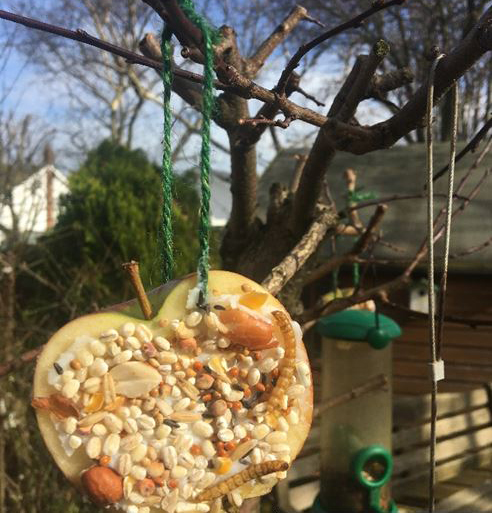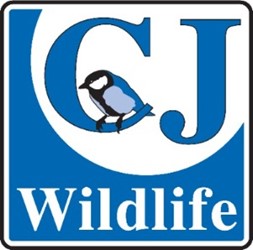As you may know, RSPB’s Big Garden Birdwatch is approaching fast – from 29th January to 31st January. This is a fantastic event for all nature lovers to take part in, with thousands of people contributing the world’s largest wildlife survey, watching the winged spectacles unfolding on our doorsteps.
Once you have signed up through the RSPB’s website, you will be sent resources to complete the birdwatch. It is very simple to take part: spend an hour outside counting and identifying the birds that you see in your garden. In this time of on-and-off lockdown, who wouldn’t benefit from spending an hour enjoying the wonders of nature?
Attracting the birds
At some stage, we’ve all wondered how to encourage more birds to frequent our gardens. Simply, birds will visit gardens with plenty of food, so investing in some feeders is step one. There are also various ways of using everyday staples, like apples, to create homemade bird feeders. First cut the apple in half and core it, then fill the hole with lard and seeds. Lard is excellent fuel for birds in winter because it is high-energy, and bacteria will not breed on it. Don’t use polyunsaturated butters, margarines or cooking fats, as these soft fats can easily be smeared onto feathers, destroying the insulating and waterproof qualities. These fats contain less energy and are breeding grounds for bacteria, which can be detrimental to the birds’ health.
Apple Bird Feeder
The mixture of seeds that you use in your feeders is completely up to you. Small seeds like millet attract birds such as dunnocks, finches, house sparrows, reed buntings and collared doves. Blackbirds will be tempted by flaked maize. Greenfinches and tits prefer peanuts and sunflower seeds. Chunks and whole nuts are suitable for winter feeding only. If you have any dried fruit or even mealworms, these are very popular among robins and blue tits. However, steer clear of dead and discoloured mealworms which can potentially cause salmonella poisoning. Wheat and barley grains are only suitable for pigeons and doves, which often crowd feeders and deter smaller birds. Again, split peas, beans, dried rice and lentils are only suitable for larger bird species.
Lard is excellent fuel for birds in winter because it is high-energy, and bacteria will not breed on it. Don’t use polyunsaturated butters, margarines or cooking fats, as these soft fats can easily be smeared onto feathers, destroying the insulating and waterproof qualities
I mainly use the following seeds: black sunflower, nyjer and peanuts. Black sunflower seeds are excellent year-round and have a higher oil content than the striped variety. Nyjer seeds are high in oil and fat, and attract goldfinches, siskins, tits, greenfinches, house sparrows, nuthatches, and great-spotted woodpeckers. Peanuts attract dunnocks, robins and even wrens when crushed. Salted or dry-roasted peanuts (heaven-forbid honey-roasted!) should not be used. Of course, the birds that enjoy your birdfeeder will vary based on your location. The final thing to do is step back and enjoy the sight of birds flocking to your garden, with branches ladened with tasty treasures for your feathered friends.
Installing a birdbath or pond is also a great way to welcome birds to your garden. Water is especially important for seed-eating birds that have dry meals and need to wash them down. Lastly, putting up bird-boxes is another fantastic way to get birds to not only visit your garden – but nest there! Think about what birds you think would nest in your garden and choose the size of bird box accordingly. A longer-term strategy is to plant hedges and dense cover which will encourage birds to create natural nest sites.
Most importantly, enjoy turning your garden into a haven for nature. If you feel like you need to brush up on your garden bird identification skills (and who doesn’t occasionally!), the RSPB have lots of helpful resources on their website – so there really is no reason not to take part. Happy Birding!
Signup for the Great Birdwatch


